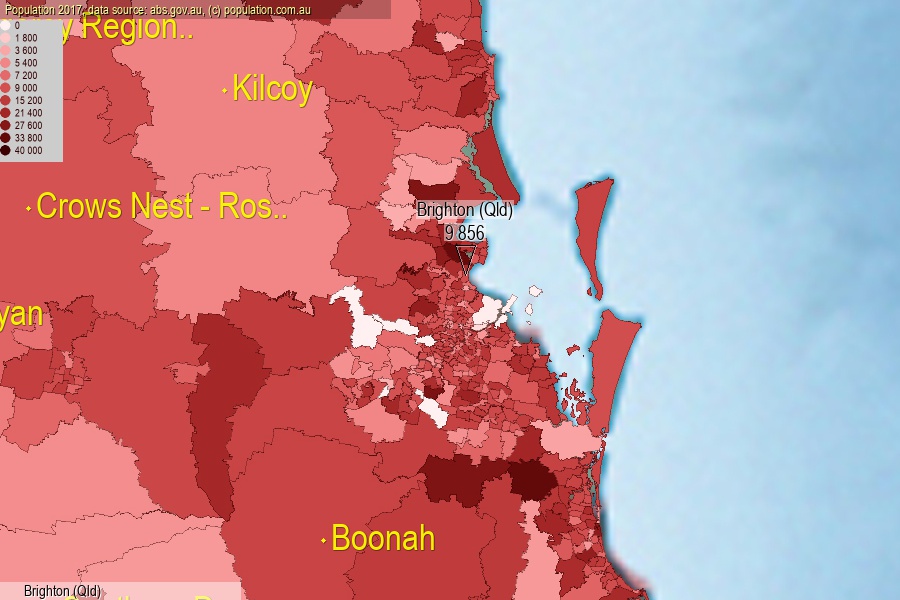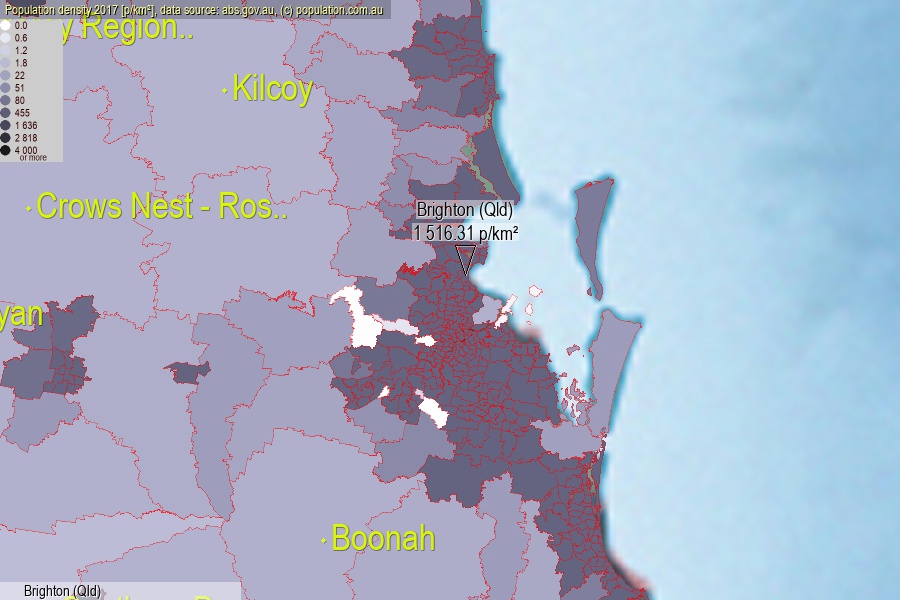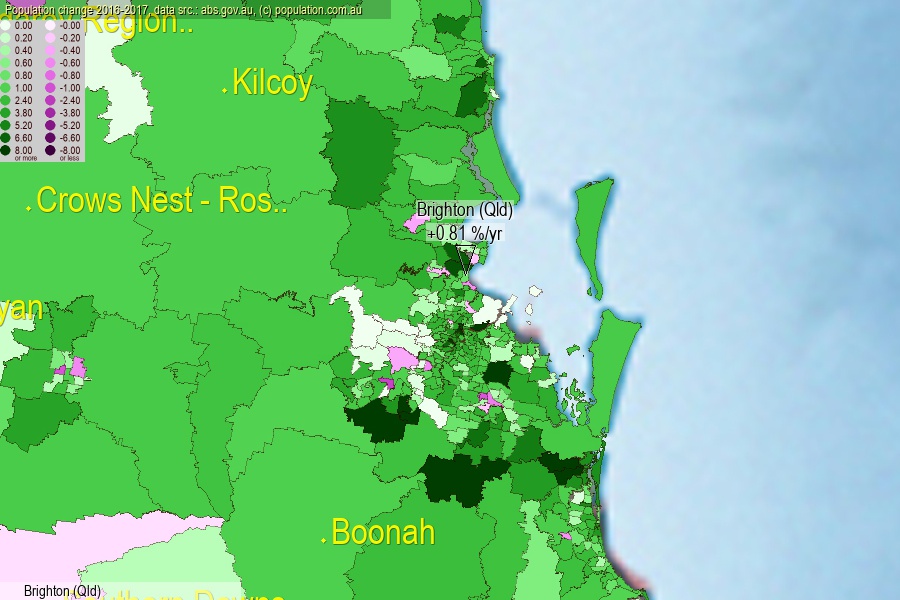 population.com.au
population.com.auLast official estimated population of Brighton (Qld) (as Statistical Area Level 2) was 9 856 people (on 2017-06-30)[2]. This was 0.04% of total Australian population and 0.197% of QLD population. Area of Brighton (Qld) is 6.50 km², in this year population density was 1 516.31 p/km² . If population growth rate would be same as in period 2016-2017 (+0.81%/yr), Brighton (Qld) population in 2025 would be 10 511. [0]



Click to enlarge. Brighton (Qld) is located in the center of the images.
Population [people], population density [p./km²] and population change [%/year] [2]
View borders » (new window) [4]
[1991-1992] -1.22 %/Yr.
[1992-1993] -0.79 %/Yr.
[1993-1994] -1.44 %/Yr.
[1994-1995] -0.93 %/Yr.
[1995-1996] -0.24 %/Yr.
[1996-1997] -0.81 %/Yr.
[1997-1998] -0.42 %/Yr.
[1998-1999] -0.41 %/Yr.
[1999-2000] +0.20 %/Yr.
[2000-2001] +0.41 %/Yr.
[2001-2002] +0.34 %/Yr.
[2002-2003] +0.38 %/Yr.
[2003-2004] +0.22 %/Yr.
[2004-2005] +0.23 %/Yr.
[2005-2006] -0.10 %/Yr.
[2006-2007] +0.98 %/Yr.
[2007-2008] +1.50 %/Yr.
[2008-2009] +1.47 %/Yr.
[2009-2010] +0.83 %/Yr.
[2010-2011] +1.19 %/Yr.
[2011-2012] +0.49 %/Yr.
[2012-2013] +1.48 %/Yr.
[2013-2014] +1.28 %/Yr.
[2014-2015] +0.89 %/Yr.
[2015-2016] +0.28 %/Yr.
[2016-2017] +0.81 %/Yr.
[0] Calculated with linear interpolation from officially estimated population
[1] Read more about SA2 and Australian Statistical Geography Standard (ASGS) on abs.gov.au
[2] Population data from Australian Bureau of Statistics (Population and density: 2017; change: 2016-2017)
[3] Digital Boundaries: Australian Statistical Geography Standard (ASGS) 2016.
[4] Border coordinates are simplifyed using Ramer-Douglas-Peucker algorithm.